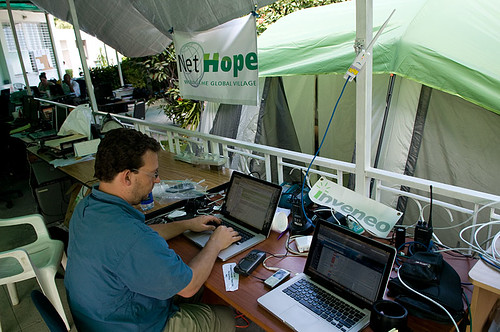Within the context of USAID, most often rural connectivity initiatives are undertaken within the context of a sector-specific program/project. This was the case case with Macedonia Connects, or what is more frequently referred to as MK Connects. This project may well be one of the more successful Last Mile Initiative (LMI) project undertaken by USAID.
In fact MK Connects is much, much more. The LMI project was undertaken as but one component of a unique national commitment to improve education, as well as a unique partnering of a significant number of both public and private sector partners.
The foundation for the success of MK Connects was the government of Macedonia’s commitment to a program for delivering a computer for every child. The result was a nationwide broadband network providing broadband into every primary and secondary school—many of which were in remote rural locations. Further, the project incorporated native language education content being delivered over this network to over 460 primary and secondary schools nationwide.
The journey started in 2002 when China donated 5,000 personal computers to support what soon became the e-Schools Project of the Ministry of Education and Science–a project that ran between 2003-2008. The MK Connects project was a piece of this larger initiative, which in 2006 was augmented by the Primary Education Project (PEP). Both MC Connects and PEP were USAID supported initiatives executed through the Academy for Educational Development (AED).
While focused on supporting Macedonia’s commitment to improve and modernize their education system top to bottom, MK Connects went well beyond connecting the 460 primary and secondary schools along with university campuses.
As the project got started in 2003, it was estimated that only 4 percent of the Macedonia’s population had access to the Internet. As the project concluded in 2007, Macedonia was the first country on the planet to achieve universal nation-wide wireless broadband coverage. Not only were all the nation’s schools connected, but the project design also provided coverage for access by private sector businesses, the government, individuals, etc.
This connectivity was undertaken through a competitive process where a local Internet Service Provider (ISP) was able to build this nation wide network in just 4 years. Motorola provided the wireless technology solution set, Canopy, a pre-WiMAX solution.
MK Connects, along with a number of important partners, was a unique experience with regards to modernizing Macedonia’s entire education system. However, the fundamental approach taken in Macedonia holds promise for application to countries around the world. The MK Connects model has been applied in neighboring Montenegro to bring more than seventy percent of the country on-line. A similar project has been constructed in Georgia. And Senegal is the first African country seeking to replicate this model.
For more information, refer to the information on Macedonia contained in the GBI project database and MK Connects case study in the document library.










































